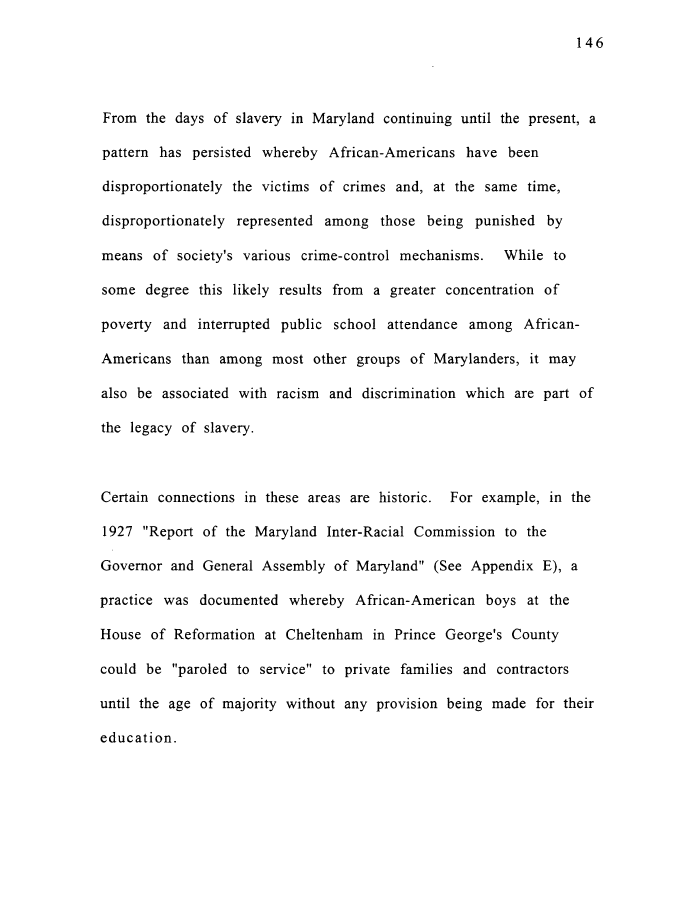 |
||||
|
TASK FORCE TO STUDY THE HISTORY AND LEGACY OF SLAVERY IN MARYLAND (Final Report) 1999/12/31 MdHR 991422 MdHR 991422, Image No: 155 Print image (34K) |
 |
||||
|
TASK FORCE TO STUDY THE HISTORY AND LEGACY OF SLAVERY IN MARYLAND (Final Report) 1999/12/31 MdHR 991422 MdHR 991422, Image No: 155 Print image (34K) |
| 146 From the days of slavery in Maryland continuing until the present, a pattern has persisted whereby African-Americans have been disproportionately the victims of crimes and, at the same time, disproportionately represented among those being punished by means of society's various crime-control mechanisms. While to some degree this likely results from a greater concentration of poverty and interrupted public school attendance among African-Americans than among most other groups of Marylanders, it may also be associated with racism and discrimination which are part of the legacy of slavery. Certain connections in these areas are historic. For example, in the 1927 "Report of the Maryland Inter-Racial Commission to the Governor and General Assembly of Maryland" (See Appendix E), a practice was documented whereby African-American boys at the House of Reformation at Cheltenham in Prince George's County could be "paroled to service" to private families and contractors until the age of majority without any provision being made for their education. |